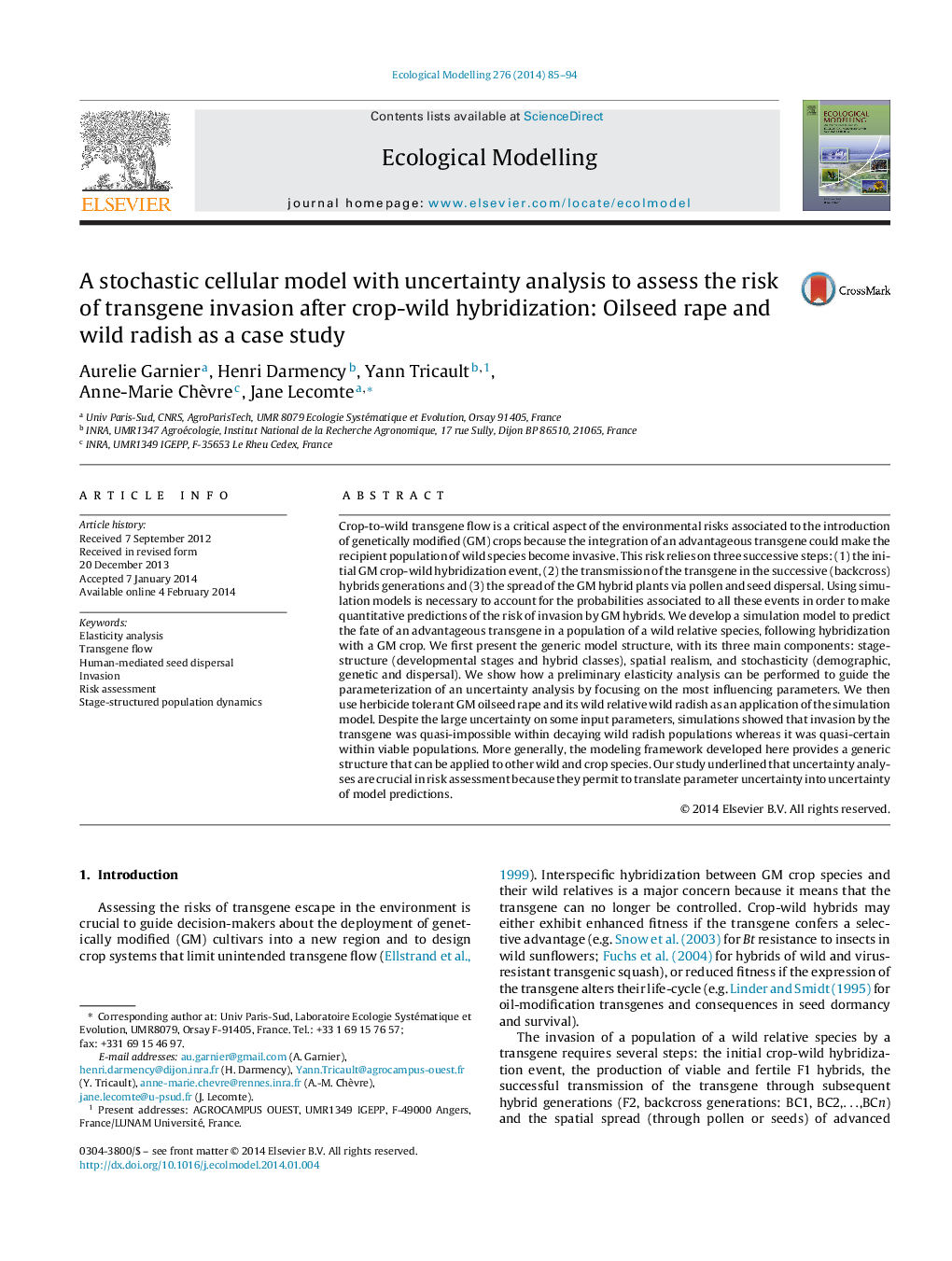| Article ID | Journal | Published Year | Pages | File Type |
|---|---|---|---|---|
| 6296896 | Ecological Modelling | 2014 | 10 Pages |
â¢Predictions of crop-to-wild transgene escape should be based on stochastic models.â¢Accounting for parameter uncertainty is crucial in risk assessment.â¢Invasion by a transgene highly depends on the viability of wild relative populations.â¢A generic model provides a basis that can be then adapted for specific applications.
Crop-to-wild transgene flow is a critical aspect of the environmental risks associated to the introduction of genetically modified (GM) crops because the integration of an advantageous transgene could make the recipient population of wild species become invasive. This risk relies on three successive steps: (1) the initial GM crop-wild hybridization event, (2) the transmission of the transgene in the successive (backcross) hybrids generations and (3) the spread of the GM hybrid plants via pollen and seed dispersal. Using simulation models is necessary to account for the probabilities associated to all these events in order to make quantitative predictions of the risk of invasion by GM hybrids. We develop a simulation model to predict the fate of an advantageous transgene in a population of a wild relative species, following hybridization with a GM crop. We first present the generic model structure, with its three main components: stage-structure (developmental stages and hybrid classes), spatial realism, and stochasticity (demographic, genetic and dispersal). We show how a preliminary elasticity analysis can be performed to guide the parameterization of an uncertainty analysis by focusing on the most influencing parameters. We then use herbicide tolerant GM oilseed rape and its wild relative wild radish as an application of the simulation model. Despite the large uncertainty on some input parameters, simulations showed that invasion by the transgene was quasi-impossible within decaying wild radish populations whereas it was quasi-certain within viable populations. More generally, the modeling framework developed here provides a generic structure that can be applied to other wild and crop species. Our study underlined that uncertainty analyses are crucial in risk assessment because they permit to translate parameter uncertainty into uncertainty of model predictions.
Graphical abstractDownload full-size image
